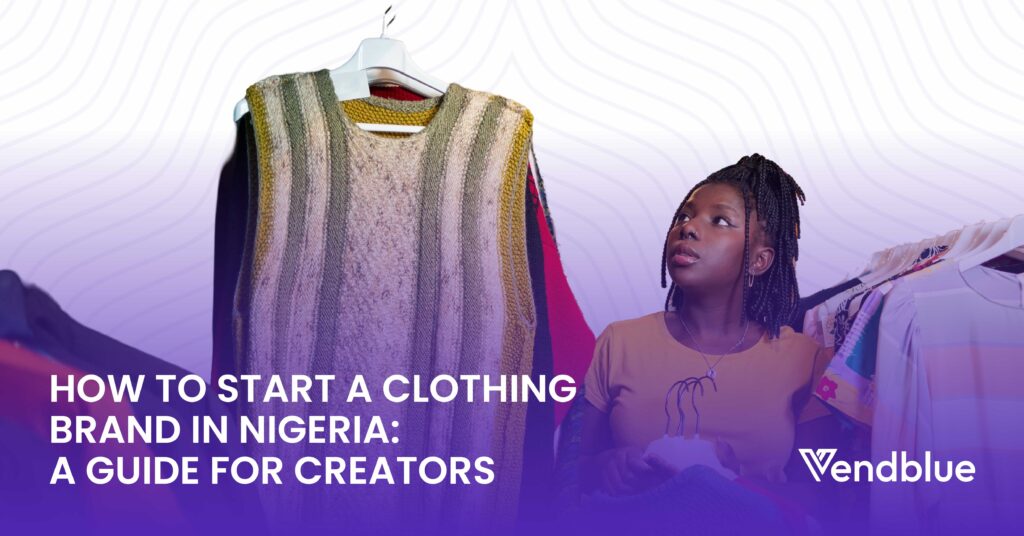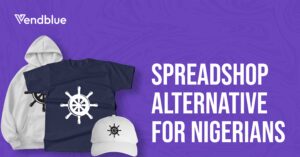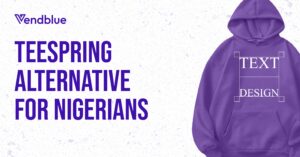Starting a clothing brand in Nigeria offers incredible opportunities, but it’s also highly competitive.
With a blend of modern fashion trends and rich cultural heritage, entrepreneurs must develop strategic approaches to stand out.
This comprehensive guide will help you navigate the entire process, from idea conception to launch, using the latest tools to build and manage your brand successfully.
Initial Research and Market Analysis
Before diving into design and production, research is the first and most crucial step. Nigeria’s fashion industry is dynamic, influenced by culture, social trends, and international style.
Creators must understand this landscape to build a brand that resonates with their target market.
Analyze Fashion Trends and Culture
- Pay attention to local trends in fabrics such as Ankara, Adire, and streetwear.
- Study cultural events, fashion weeks (e.g., Lagos Fashion Week), and seasonal shifts to tailor your designs.
- Consider sustainability as many Nigerian consumers are now interested in eco-friendly fashion.
Identify Your Market Niche
- Streetwear: Target young, urban buyers who appreciate casual and bold designs.
- Traditional Wear: Leverage Ankara prints for modern twists on native outfits.
- Eco-Friendly Fashion: Cater to environmentally conscious consumers.
- Athleisure or Sportswear: Address the growing fitness and wellness trend.
Conduct Competitor Analysis
- Analyze competitors like David Wej or Zashadu to learn how they position themselves.
- Identify pricing gaps and unique selling points (USPs).
- Study customer reviews to discover pain points and areas for differentiation.
Design and Product Development
Developing your clothing designs is an exciting phase but requires planning. A solid product development strategy will help manage costs and ensure your brand stands out.
Create Unique Designs
- Collaborate with local artisans to design culturally inspired outfits.
- Incorporate modern aesthetics to attract younger demographics.
Develop a Minimum Viable Product (MVP)
- Start small with a prototype collection to test the market.
- Use local suppliers to source materials such as cotton or Ankara.
- Address manufacturing challenges early by creating samples and adjusting designs as needed.
Partner with Local Suppliers and Artisans
- Working with small-scale tailors or fabric dyers can give your brand a unique, handcrafted appeal.
- Develop long-term partnerships with reliable suppliers to ensure consistency.
Production Process with Print-On-Demand (POD)
One way to reduce production risks is by leveraging print-on-demand (POD) services. With POD, you don’t need to maintain large inventories or worry about unsold stock.
Benefits of Print-On-Demand (POD)
- Low Investment: No need for bulk orders or storage facilities.
- Customizable: Test multiple designs without committing to large quantities.
- Automated Fulfillment: Orders are printed and shipped directly to customers.
Leverage Vendblue Merch for POD
- Vendblue Merch is an excellent platform for clothing brands in Nigeria, offering POD services with seamless order handling and nationwide delivery.
- With Vendblue’s automated processes, you can focus on marketing while the platform handles production and fulfillment.
- Their integrated dashboard allows you to upload your designs, manage orders, and monitor performance effortlessly. Visit Vendblue Merch to explore their offerings.
Branding and Marketing
Brand identity is the soul of your clothing line. Effective branding helps customers relate to your brand, while strong marketing ensures they find you.
Build a Strong Brand Identity
- Name and Logo: Choose a catchy brand name and create a memorable logo that reflects your niche.
- Brand Story: Share your journey or the mission behind the brand to connect with customers emotionally.
- Packaging: Use branded tags, eco-friendly packaging, and personalized thank-you notes to enhance the customer experience.
Leverage Social Media for Promotion
- Instagram and TikTok: Use these platforms for visual storytelling and showcase your clothing collection.
- Facebook Ads: Target specific demographics and locations with paid ads.
- Influencer Collaborations: Partner with fashion influencers to amplify your brand.
- Pop-Up Events and Giveaways: Organize events to engage your audience physically and drive online buzz.
Sales Channels and E-commerce Setup
Choosing the right sales channels will determine how easily customers can access your products.
Select the Right Sales Channels
- Website: Build a mobile-friendly e-commerce site where customers can shop directly like Vendblue, WordPress, and shopify .
- Online Marketplaces: List your brand on platforms like Jumia and Konga to reach a broader audience.
- Retail Partnerships: Consider placing your products in local boutiques or department stores.
Financial Management and Scaling
Managing your finances efficiently is essential to building a sustainable clothing brand.
Budgeting and Cash Flow Management
- Track every expense and monitor cash flow regularly.
- Allocate funds for marketing, product development, and unforeseen costs.
Explore Funding Opportunities
- Apply for SME grants or pitch to angel investors for seed funding.
- Consider using crowdfunding platforms to pre-sell your first collection and raise capital.
Scaling Your Business
- Expand your product range to include accessories or footwear.
- Open a physical store in major cities like Lagos or Abuja as demand grows.
Conclusion and Next Steps
Starting a clothing brand in Nigeria is challenging but rewarding. Focus on building a strong foundation by researching the market, crafting unique designs, and leveraging platforms like Vendblue for production and fulfillment.
Social media marketing will be instrumental in driving awareness, while proper financial management will ensure long-term growth. Stay motivated, be ready to pivot if needed, and continuously adapt to trends and customer preferences.
FAQs
How can I test my clothing designs before a full launch?
- Create a Minimum Viable Product (MVP) and launch small batches to gather feedback before scaling production.
What is the best way to manage inventory without large storage costs?
- Use print-on-demand (POD) platforms like Vendblue Merch, which handle production and delivery on your behalf.
What social media platforms are best for promoting a clothing brand in Nigeria?
- Instagram, TikTok, and Facebook are ideal for showcasing designs, running ads, and engaging with customers.
How much does it cost to start a clothing brand in Nigeria?
- With Vendblue merch, its zero cost but if you want to handle production the costs vary, but a lean startup could begin with ₦500,000 to ₦1 million, covering product samples, website development, and marketing.
How can I scale my clothing brand in the future?
- Expand your product line, collaborate with retailers, and invest in online advertising to grow your audience.





